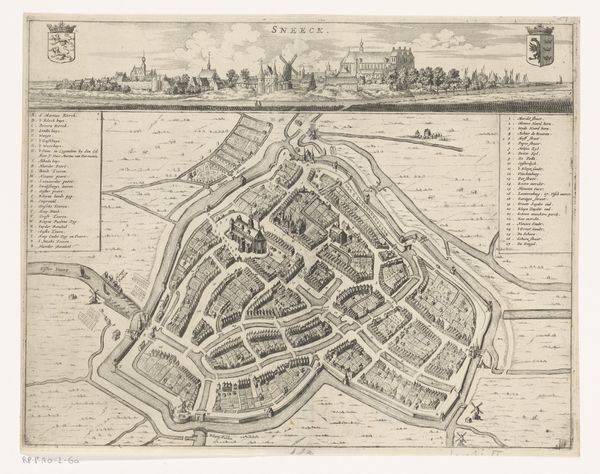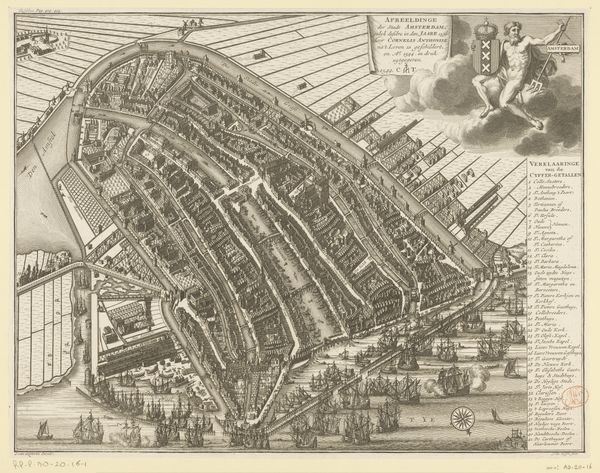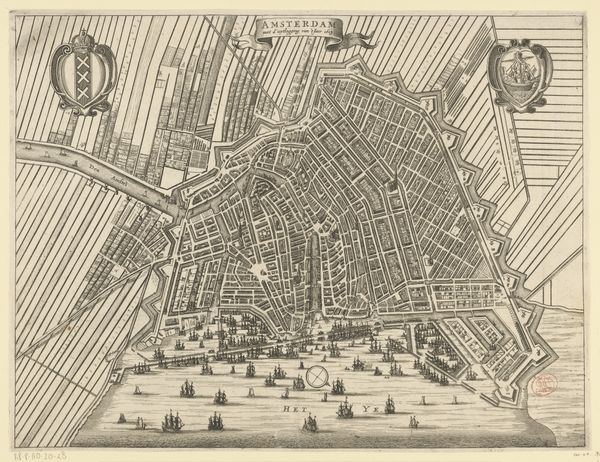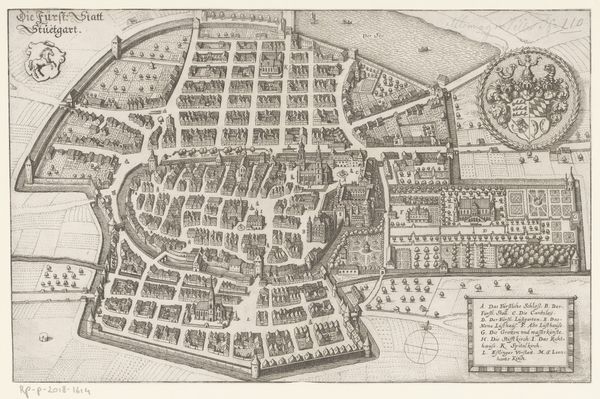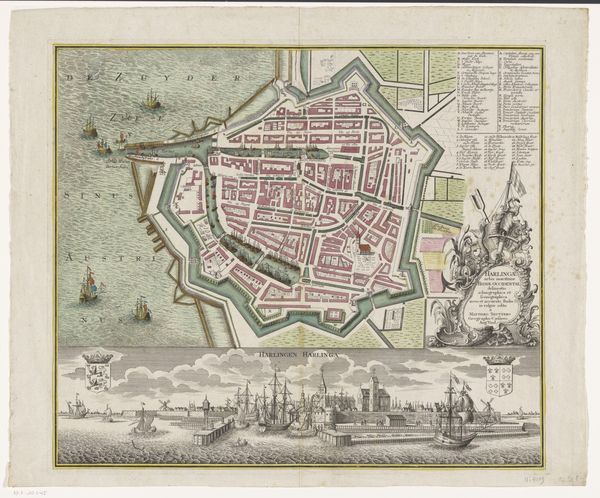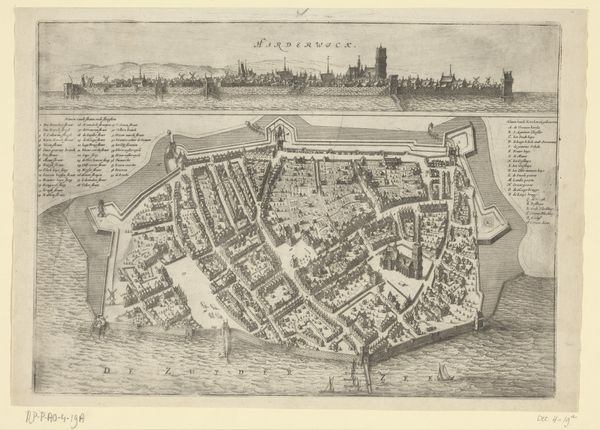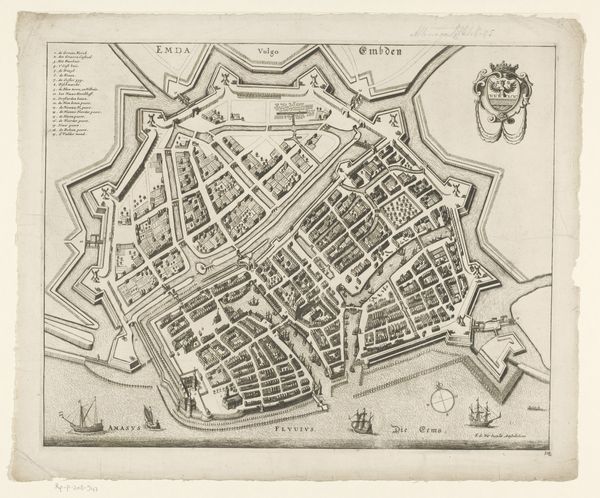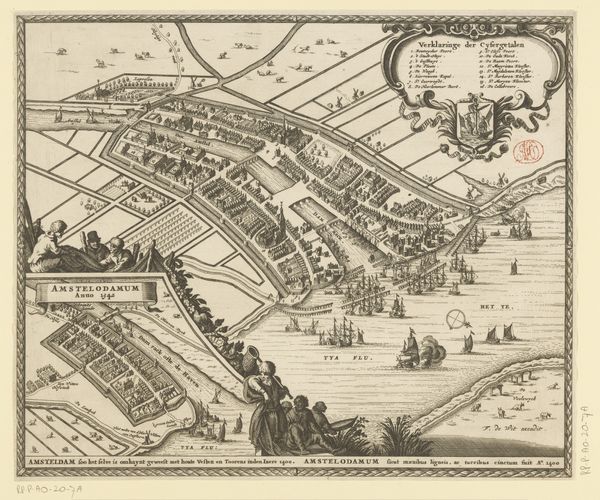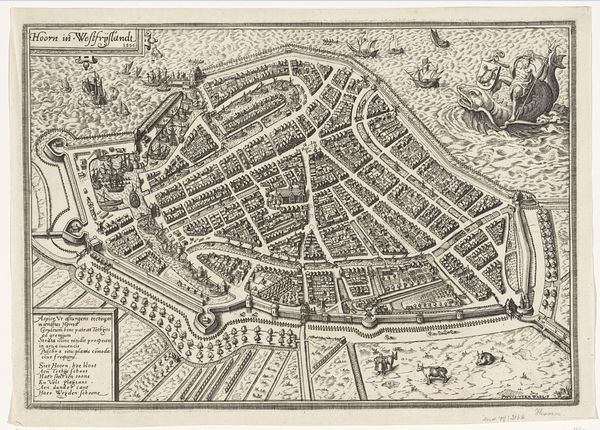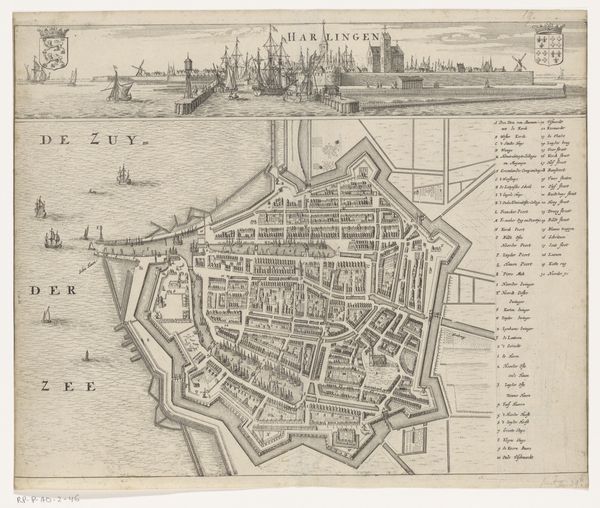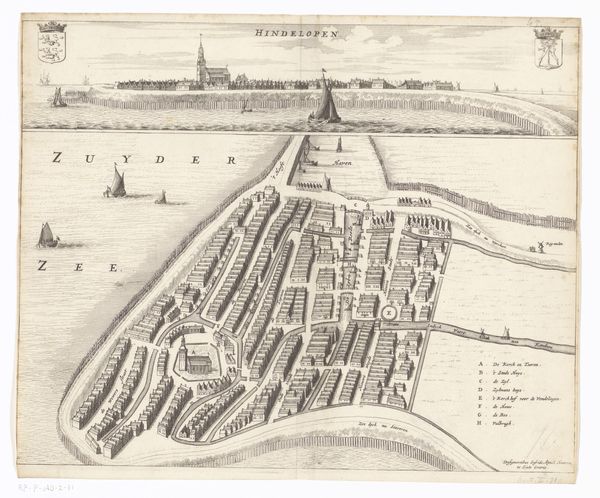
print, engraving
# print
#
11_renaissance
#
cityscape
#
northern-renaissance
#
engraving
Dimensions: height 337 mm, width 482 mm
Copyright: Rijks Museum: Open Domain
Curator: Here we have a cityscape by Frans Hogenberg from 1572 entitled "Plattegrond van Amsterdam," held in the Rijksmuseum. The engraving shows a bird's eye view of Amsterdam during the Renaissance. Editor: My first thought is how ordered it all appears, almost diagrammatic in its arrangement of the streets and canals. The ships create such a dense perimeter! It evokes the spirit of an era keenly aware of trade and navigation, wouldn’t you say? Curator: Precisely. Hogenberg meticulously constructs a layered composition with dense, linear patterns depicting the buildings, which present sharp tonal contrast that directs the viewer’s eye along precise architectural lines. Editor: Note, too, the strategic placement of symbolic elements—the coats of arms, the figures on the lower left…even the orientation towards the water is rich with maritime connotations of Dutch mercantile power at that moment. Each choice carries a visual and historical weight. Curator: A formal choice which amplifies symbolic intent! Structurally, those elements act as anchors to stabilize the panoramic scene, preventing the elaborate detail from feeling chaotic. There is, in my mind, a direct mirroring of content with presentation. Editor: Looking at the symbolism further, water dominates, teeming with ships. These aren’t just generic boats. Each tells a tale of commerce, exploration and possibly military prowess. Amsterdam’s identity and destiny is profoundly interwoven with that watery element. The watery symbol creates emotional undercurrents of adventure and perhaps domination. Curator: And in purely visual terms, this engraved network, so finely etched and calculated, produces a dynamic rhythm across the surface. A structured yet fluid tension arises—which I find intellectually rather satisfying! Editor: It encapsulates an age so deftly negotiating between a godly symbolic order and a dawning era of empiricism. It allows us to grasp the soul of early Amsterdam beyond its bricks and mortar. Curator: The print's lines create an early, linear method of thinking; very organized with purpose and control over visual and functional space. Editor: It is really impressive how symbolism enhances both our aesthetic understanding and our cultural history. The work provides access to different dimensions simultaneously.
Comments
No comments
Be the first to comment and join the conversation on the ultimate creative platform.

